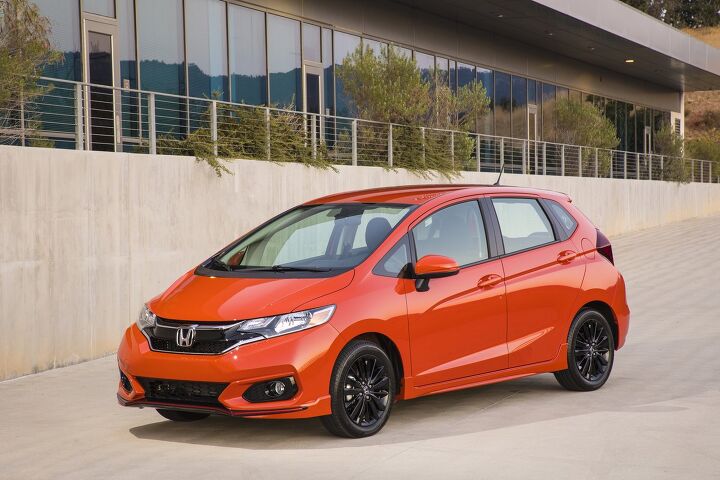#MarketTrends
Average Automotive Pricing Window Continues Shifting Upwards
Now that fuel prices are popping off and it’s becoming glaringly obvious that we’re falling into another recession, one would hope that automakers would be prioritizing their more economical models. Unfortunately, most manufacturers operating in North America spent the last decade culling the smallest models from their lineup. Domestic brands took the practice so far that several no longer offer traditional cars, opting instead for compact crossover vehicles yielding higher price tags and broader profit margins. Foreign brands were only marginally more reserved with the ax.
This has helped move the average vehicle transaction price beyond $42,000 in the United States, according to Edmunds, with used rates sitting somewhere around $28,000. Though the cause isn’t entirely down to there being a complete lack of econoboxes on the market. Increased regulations and the industry’s newfound obsession with connectivity/tech have also increased pricing. But it doesn’t change the fact that we’re now confronting a situation where almost nobody is selling the kind of small, affordable vehicles that cater to shoppers needing to be thrifty right when they really need them.
Study: Automotive Debt Is Out of Control, You're Being Swindled
Consumer Reports just released the findings of a year-long stud y looking into the latest trends in automotive loans and car payments. The resulting information highlights just how explosive the debt growth has been over the last 10 years and the arbitrary way in which borrowers are now being treated.
Long story short, we’re all being swindled.
With vehicle prices ballooning and the associated loans becoming longer than ever, dealers and lenders seem to be operating whatever way yields the steepest profit margins with only a modicum of consideration being given to the established frameworks designed to act as a guard rail. This has led to U.S. citizens carrying around a record $1.37 trillion in automotive load debt and customers with good credit being treated no different than those that fall into the subprime category. Sadly, the issue appears only appears to be worsening as new economic perils are only making things more expensive. Meanwhile, data from the Federal Reserve Bank of New York is projecting national auto debt to swell to $1.42 trillion by year’s end.
U.S. Subcompact Car Market Share Fell by Half Since 2016; Subcompact Crossover Segment Tripled Since 2013
No Yaris. No Fiesta. No Sonic. No Mazda2. No Fit.
America’s subcompact car segment is decimated. According to Tyson Jominy, the vice president of data and analytics at J.D. Power, 40 percent of last year’s subcompact sales are gone. Jominy doesn’t mean “fewer sales.” He means that the nameplates responsible for 40 percent of the sales are gone.
And is it any wonder? As recently as 2014, subcompact cars produced 3.8 percent of all U.S. auto sales. Collectively, the few remaining subcompact cars now account for just 1.4 percent of the American light vehicle market.
At the current rate of decline, fewer than 1 percent of the vehicles sold in America in 2022 will be subcompact cars. But we all know the current rate of decline is hardly an accurate harbinger. If subcompacts own 1 percent of the market in 2021, we’d be surprised.
Lexus Says It's Sticking With Cars, Despite the Scorching SUV Market
Ever since Ford announced its abandonment of traditional passenger cars that aren’t the Mustang, automakers have been very clear to specify whether or not they plan to do the same. The majority seem to feel as if cars have a place in the market. That said, very few manufacturers are increasing sedan output when crossovers and sport utilities are presently so lucrative. For example, Lexus owes the majority of its volume to higher-riding liftbacks, but recently made the promise to maintain a diverse production portfolio.
Accounting for roughly one third of its total volume, cars aren’t the brand’s biggest money maker anymore. But Toyota’s luxury arm believes ditching them now would be an imprudent strategy. Perhaps Lexus is keeping an eye on fuel prices, or maybe it just realizes it can’t play the game in the same manner as the already truck-focused Ford.
When It Comes to Tardy SUV Launches, at Least Volkswagen Knows It Has a Problem
“I don’t know why we are late.”
– Frank Welsch, head of development for Volkswagen, ahead of T-Roc launch
It’s been less than one week since TTAC’s B&B had its collective say on the subject of Volkswagen’s SUV delays. But in an interview with Autocar, Volkswagen’s head of development, Frank Welsch, certainly isn’t denying the problem.
“I don’t know why we are late,” Welsch says, speaking not only of utility vehicles such as the T-Roc, but Euro-MPVs as well. “With the Touran we were late, the Sharan we were late. I cannot explain why, here we are.”
“I’m happy to have this car now.”
As if stepping out of a rehab program for automakers addicted to ignoring obvious trends, Volkswagen has finally completed the first step: recognizing the problem. The T-Roc will be unveiled this afternoon, August 23, 2017, years after the Nissan Juke, Mini Countryman, Subaru Crosstrek, Buick Encore, Chevrolet Trax, Jeep Renegade, Honda HR-V, and Mazda CX-3 took control of the subcompact crossover segment.
Are Sport Utility Vehicles About to Become Passe or Simply More Affordable?
Sport utility and crossover vehicles have gradually become hotter than the surface of the sun as the public has come to treat sedans with the sort of disdain usually reserved for an old high school flame. It was decent while it lasted, but now you don’t even really want to acknowledge that it was ever a part of your life.
Sales have reflected this and automakers have hurried to supply an eager market with utility vehicles. While some did not quite meet demand, and have suffered for it, others are seeing rising incentives to meet the growing inventory surplus — giving us our first indications that interest in SUVs and crossovers has its limits.





















Recent Comments